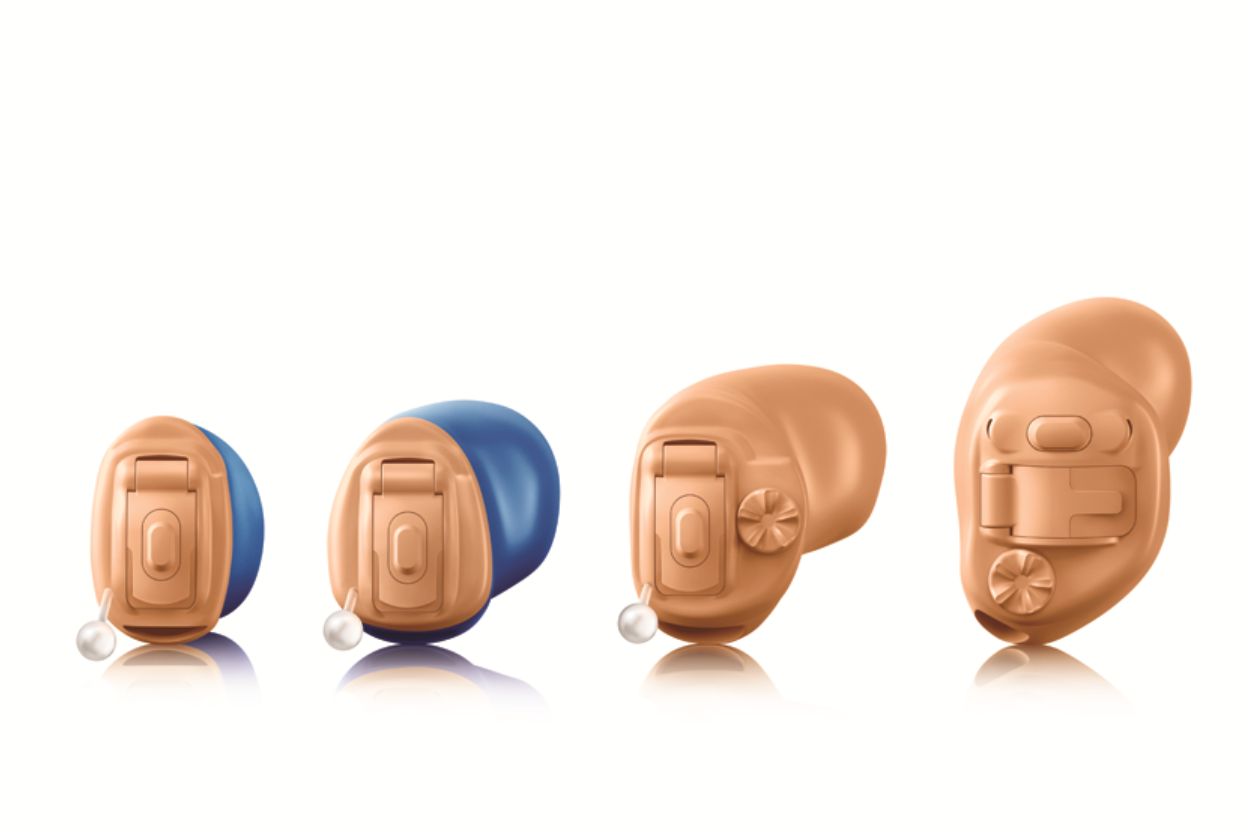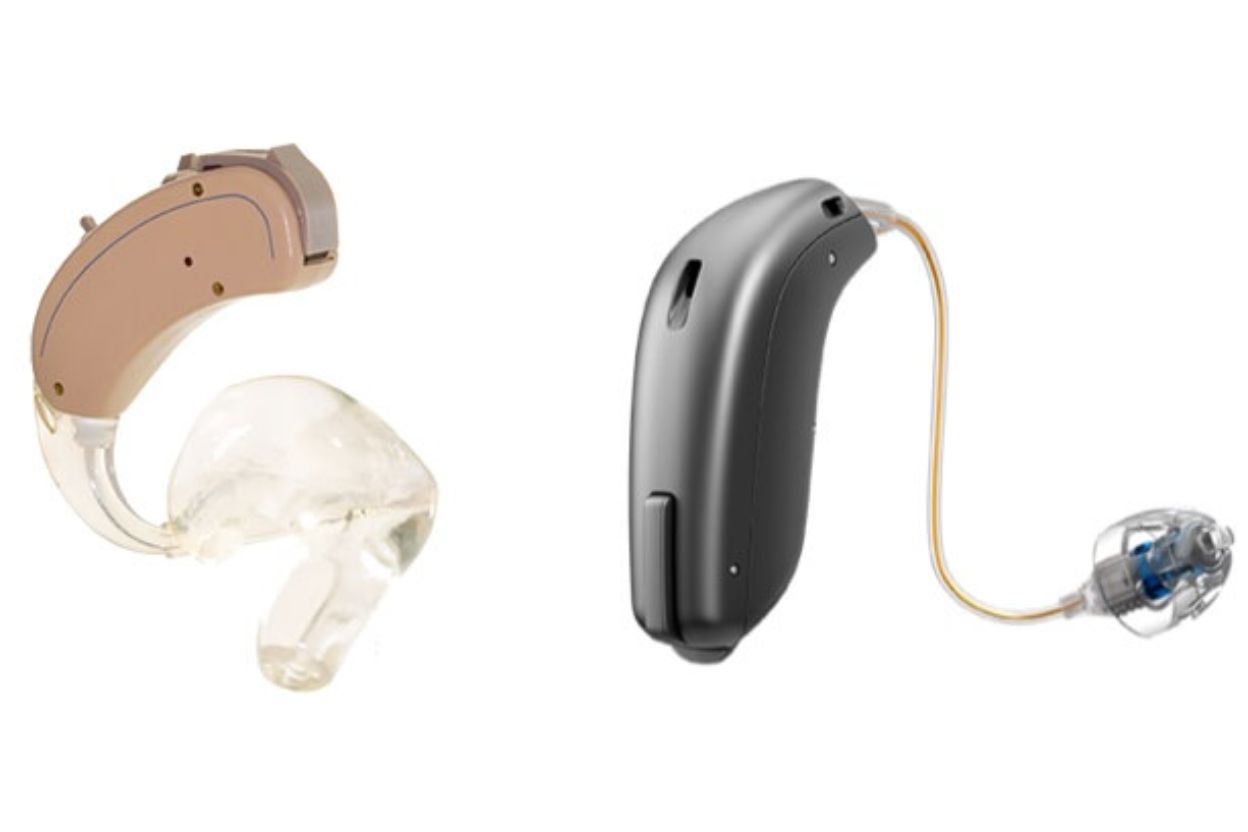Hearing Aids
Hearing Aid Overview
Hearing aids are one of the most widely recommended treatments for hearing loss, designed primarily to amplify sound while offering a variety of advanced features that enhance daily listening. Available in numerous styles, colors, and sizes, each type of hearing aid provides different benefits depending on an individual’s lifestyle and hearing needs. With adjustable settings like volume and frequency shaping, these devices can be customized for optimal clarity and comfort. Hearing aids offer exceptional convenience and help people with hearing loss stay engaged and connected to the world around them.
Hearing Aid Styles
Although hearing aids come in a wide variety of shapes, colors, and sizes, they are typically grouped into two main styles. The key difference between them is how they are worn, with each style offering several sub-types to suit individual preferences. The two primary hearing aid styles are:

In-the-ear (ITE)
In-the-ear (ITE) hearing aids are custom-built to match the exact shape of your ear canal, which means ear impressions are required to ensure a precise, comfortable fit. These discreet devices are ideal for individuals who prefer a nearly invisible hearing solution and are available in three main sizes that sit in different parts of the ear. Completely-in-canal (CIC) models are the smallest and sit deep inside the ear canal, making them almost impossible to see. Invisible-in-canal (IIC) devices are slightly larger but still very unobtrusive, resting just at the canal’s opening. The largest of the group, in-the-canal (ITC) hearing aids, fit securely within the contours of the outer ear. ITE hearing aids are typically best suited for those with mild to moderate hearing loss.

Behind-the-ear (BTE)
People with severe hearing loss often benefit most from this style of hearing aid, though it can also work well for those with milder impairment. Behind-the-ear (BTE) devices are larger than other styles, giving them the power and advanced capabilities needed for more complex listening environments. Variations like receiver-in-the-ear (RITE) and mini-BTE models differ based on how their internal components are arranged. As the name suggests, BTE hearing aids sit behind the ear, with the main unit resting comfortably above the earlobe and a thin, clear tube or wire guiding the earpiece into the ear canal.
Hearing Aid Technology
For individuals with hearing loss, even simple daily tasks can become challenging. Fortunately, today’s hearing aids do far more than amplify sound; they offer a wide range of advanced features designed to make life easier and more enjoyable. Some of the latest technologies include:
Tinnitus Masking
While there is no definitive cure for tinnitus, modern hearing aids now offer features that can help reduce its impact. Tinnitus masking technology emits soft, low-level white noise to help lessen the perception of ringing, humming, or buzzing sounds commonly associated with this condition.
Digital Signal Processing (DSP)
Digital Signal Processing uses advanced algorithms to separate speech from background noise such as traffic, crowds, or construction. This makes conversations clearer and more comfortable—and it enhances the listening experience for music as well.
Rechargeable Batteries
Advances in battery technology have eliminated the frequent need to replace disposable batteries. Many hearing aids now use long-lasting lithium-ion rechargeable batteries that can be powered up just like a smartphone. Some of the newest models even support wireless charging with a simple charging mat.
Feedback Cancellation
Feedback cancellation technology prevents the high-pitched whistling that can occur when sound reflects between the device and the ear. It also preserves the natural quality of speech and environmental sounds, helping you hear subtle nuances more clearly.
Bluetooth Connectivity
Modern hearing aids can connect wirelessly to Bluetooth-enabled devices, allowing you to stream audio directly from your phone, TV, tablet, or computer. This offers greater convenience and improved sound quality, all without the need for cords or accessories.

Privacy Policy | No Surprises Act | | © 2025 Professional Hearing Care
